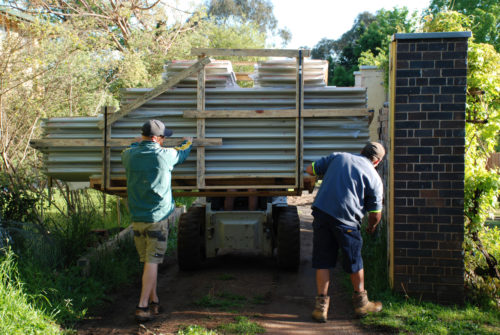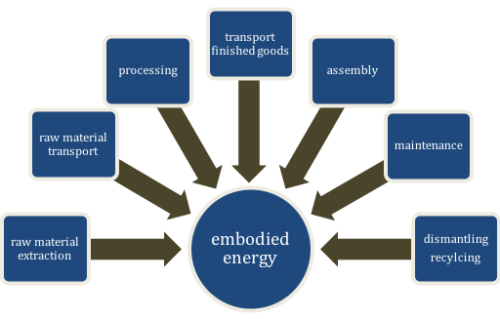 Having a well-designed, energy efficient house isn’t the only way to reduce your carbon footprint. As well as reducing the energy we use: the operational energy used to heat, cool, light and run appliances; choosing the right materials will reduce the embodied energy. Embodied energy is the total of all energy used to manufacture, transport and install the materials used in your home.
Having a well-designed, energy efficient house isn’t the only way to reduce your carbon footprint. As well as reducing the energy we use: the operational energy used to heat, cool, light and run appliances; choosing the right materials will reduce the embodied energy. Embodied energy is the total of all energy used to manufacture, transport and install the materials used in your home.
Because a house uses both operational and embodied energy, we need to look not only at all the materials and appliances used, but also how and where they were made, what energy was used in construction or installation, how long they will last, and what becomes of them when they are no longer needed.
In other words, in order to make environmentally sound choices, we need to know the life cycle of the materials, which is derived by combining the embodied energy, the operational energy, the longevity of the materials and their ultimate disposal.
Old timber houses, for example, have low embodied energy. The timber used was often sourced and milled locally and then constructed manually. They have lasted generations without needing replacement. Small houses tend to have less embodied energy because they require less materials and energy to construct.
Measuring embodied energy means you can compare the amount of energy produced or saved by the product to the amount of energy consumed in producing it. It helps to decide if it contributes to or mitigates global warming. But it isn’t straightforward – something with low embodied energy, may be transported a long way. Alternatively, it might have high embodied energy, but result in lower operational emissions once installed. Considering the embodied energy of the whole building rather than individual materials will help to make sound choices.
Designing durable, adaptable and quality built houses extends the embodied energy of the materials used. Similarly, designing buildings that can easily be recycled will also improve the building’s overall embodied energy. While operational energy can be influenced by behaviour, embodied energy is dependant on choices made beforehand – that is the selection of materials and the design of the building.
To reduce embodied energy:
- Design for adaptability, longevity, low maintenance
- Design for standard sizing to reduce wastage and offcuts
- Opt for low-embodied materials (weighed up against other benefits)
- Ensure materials can easily be separated for future recycling
- Use locally / regionally sourced materials (avoid transport)

By: Mahalath Halperin, Architect
